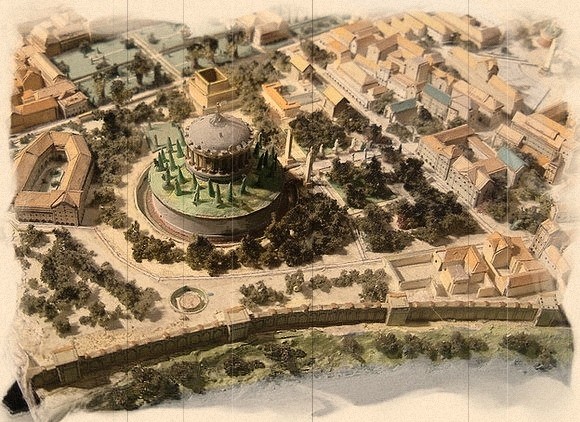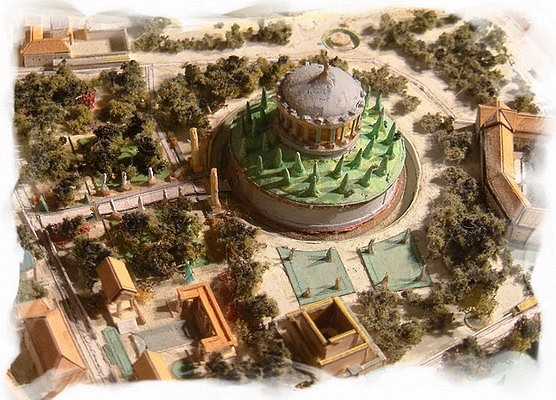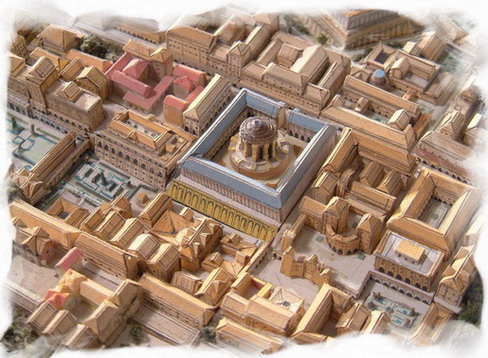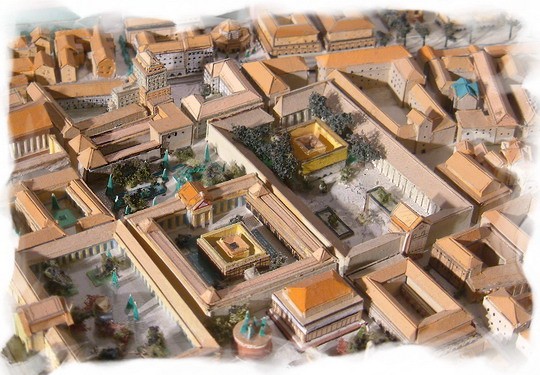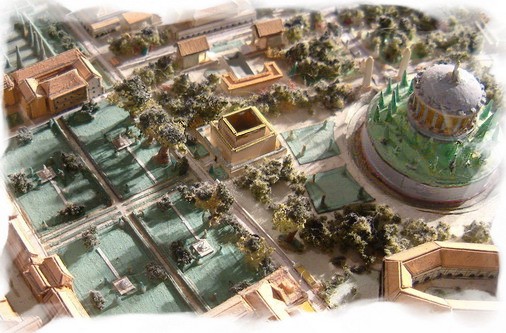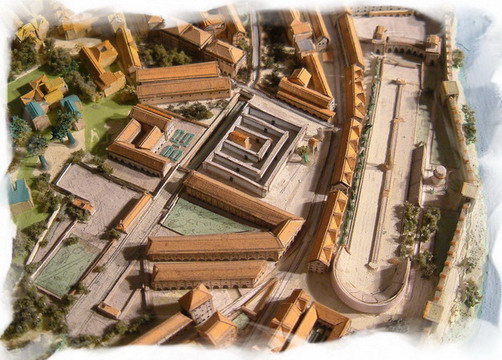The mausoleums are the graves that the emperors let build for their family.
On the contrary to the
“cenotaph”, which is erected to the memory of a dead
person but doesn’t contain the body.
Hadrian’s Mausoleum 
which later will
become the fortress of Angel’s Castle, that we know
today, is the greatest of all.
Two steps away from the Vatican Naumachia and Caligula’s Circus (out of the model),
the Mausoleum had a privileged position on the bank of the Tiber, surrounded by
huge private gardens. Almost all mausoleums have the same architecture as the
Etruscan tombs with tumulus. On a rectangular base, a cylindrical construction
surmounted by a tumulus planted with cypresses. In addition to Emperor Hadrian,
other famous people have been buried there : Antoninus Pius, Marcus-Aurelius,
Commodus, Septimius-Severus and Caracalla. View of the Mausoleum in the north-west angle.



